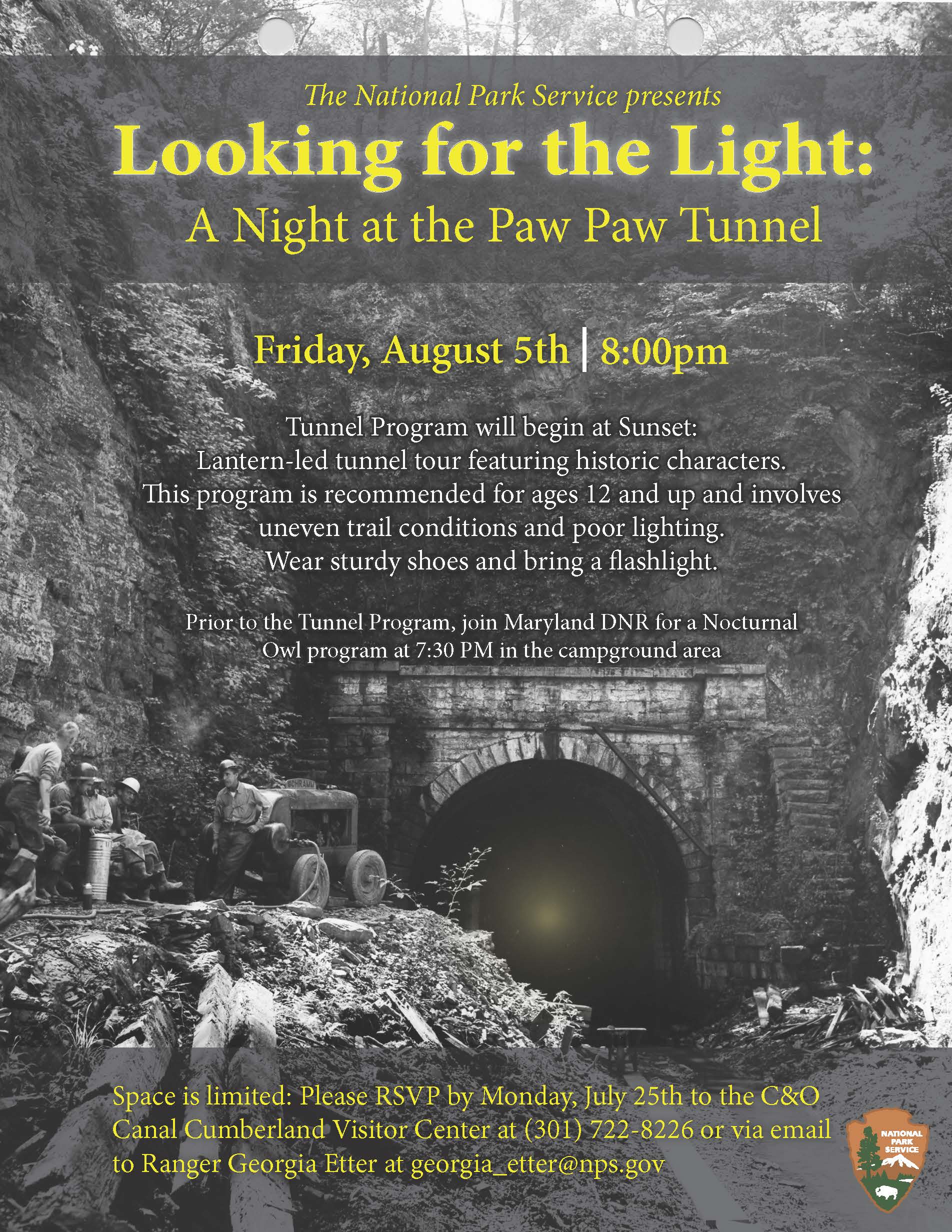

The charter was taken over by the newly formed C&O Canal Company in 1828.Ĭonstruction on the Paw Paw Tunnel began in 1836 with a workforce composed largely of English, Welsh, German and Irish laborers. Three decades later, more than $729,000 had been spent on the project, but navigation on the river was still limited to only 45 days a year. The Potomac River was dangerous and difficult to navigate, and the charter to build a canal to create a trade route with western settlements in Ohio and beyond was granted on May 17, 1785, to the Potowmack Company whose investors included George Washington. The C&O Canal and the B&O Railroad both played important roles in the town's growth and prosperity. Transportation WV 9 heading east out of Paw Paw The first public school in Paw Paw started in the early 1870s in a building erected on the grounds of the tannery, but was washed away in the flood of 1877. The streets are superb, plank pavements elegant and her street lights refulgent." The streets were lit by oil lamps until 1926 when the Paw Paw Electric Company was awarded the franchise to bring electricity to the town. The Morgan News reported in 1894 "Paw Paw at the present time is more beautiful than in any former time of her history. Paw Paw also became well-known for its local orchards and fruit packing houses. Hoyt and Company of New York established a leather factory in Paw Paw, which provided hundreds of jobs until its closure in 1951. Because of its proximity to both the railroad and the river, Paw Paw was considered a place of strategic importance during the American Civil War and was occupied by some 16,000 Union troops, most whom were quartered at Camp Chase (now Camp Hill), located east of Paw Paw, under the command of Brigadier General Frederick W. Two years later, construction of the Baltimore and Ohio Railroad began.

In 1836, the C&O Canal Company began work on a tunnel that was designed to eliminate seven miles of navigation on the river near Paw Paw. Washington described the land as being “In the shape of a horseshoe, the river running almost around it-two hundred acres of rich low grounds with a great abundance of walnut trees.” īy 1749, the Potomac River near present-day Paw Paw was being navigated by fur traders of the Ohio Company, while settlers were establishing farms on the surrounding land. The following year, George Washington surveyed the region and later purchased land on the Paw Paw Bends, so named because of the way the Potomac River twists and turns for 31 miles between the towns of Paw Paw and Little Orleans. In 1746, Thomas Jefferson’s father Peter was part of the survey party that reached the source of the Potomac River and set down the landmark known as the Fairfax Stone, now part of the Fairfax Stone Historical Monument State Park. The territory, which includes Morgan County, was eventually inherited by Thomas, sixth Lord Fairfax and became known as the Fairfax Land Grant. In 1681, England’s King Charles II made the first land grants in what is now the Eastern Panhandle of West Virginia. As European settlements gradually spread across western Virginia, the tribes were pushed from their villages and fields, which were then claimed and cultivated by the new settlers. In the 17th century, Europeans began arriving in increasing numbers. The earliest human habitation in the upper Potomac River Valley probably dates from 10,000 BC when humans migrated across the Bering Straits into North America. Īccording to the United States Census Bureau, the town has a total area of 0.53 square miles (1.37 km 2), all of it land. Today, the tunnel and nearby canal are part of the Chesapeake and Ohio Canal National Historical Park.

Construction of the tunnel began in 1836 and was completed in 1850, 12 years behind schedule. The town is the namesake of the Paw Paw Tunnel which was part of the Chesapeake and Ohio Canal.

The Paw Paw Valley is surrounded by the ridges of Sideling Hill, Green Ridge, Purslane Mountain and Town Hill. Paw Paw is located along the section of the Potomac River known as the Paw Paw Bends. Paw Paw is the westernmost incorporated community in Morgan County, and the Hagerstown-Martinsburg, MD-WV Metropolitan Statistical Area. Paw Paw was incorporated by the Circuit Court of Morgan County on April 8, 1891, and named after pawpaw, a wild fruit that grows in abundance throughout this region. The town is known for the nearby Paw Paw Tunnel. The population was 410 at the 2020 census. Paw Paw is a town in Morgan County, West Virginia, United States.


 0 kommentar(er)
0 kommentar(er)
